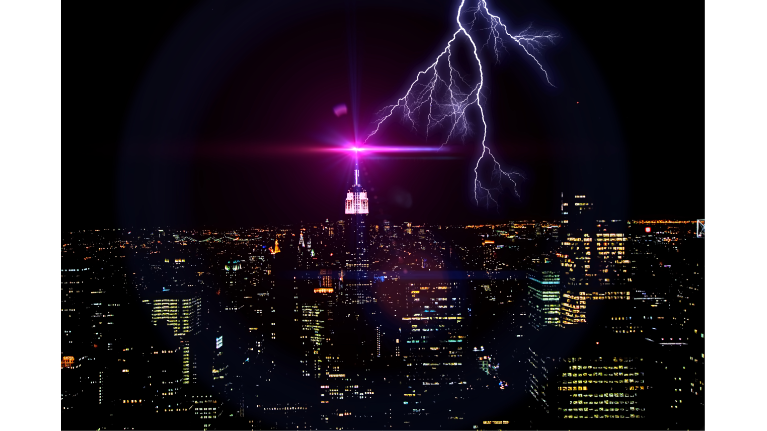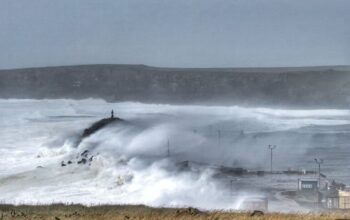5 US skyscrapers-
Is it true about what they say that lightening never strikes twice?
The following written content by Jesse Ferrell
They say that lightning never strikes twice, but meteorologists and photographers know that it does, especially regarding tall buildings.

Vaisala
With lightning strike data compiled by the Finland-based company Vaisala, which tracks global lightning strikes, among other weather data, AccuWeather has discovered which skyscrapers in the United States have been struck the most over the last five years.
By a wide margin, three skyscrapers in the East stood out for repeated lightning strikes between the years 2015 and 2020. At 1,776 feet tall, the tallest building in the U.S., One World Trade Center in New York City, was struck 189 times between 2015 and 2020, but it wasn’t the most frequently hit building in the nation.
The Port Authority of New York & New Jersey blog explains how the lightning arrestor technology, which protects the inside of the building, works. “One WTC is a super-sized Faraday cage that distributes electrical current around the outside of the tower, with none of it passing through the interior space of the building. The current discharges into the bedrock below the tower and dissipates into the earth.”
Other tall buildings throughout the country have similar lightning arrestor technology, and it doesn’t differ that much from lightning rod systems for homes.

Lightning Events 2015-2020 for the buildings that qualified for the study, from Vaisala data.
AccuWeather/Vaisala
The tallest building in the U.S. certainly stands out when looking at a map of the city. Lightning strikes for 2015-2020 are fairly widely spaced, with the exception of One World Trade Center, the Empire State Building (which was struck about 50 times), and a few tall buildings across the Hudson River in Jersey City, New Jersey, were hit, too. In rare cases, both the Empire State Building and One World Trade have been struck at the same time.
Yet the Big Apple isn’t the U.S. city with the most frequently struck building. That distinction goes to the Willis Tower in Chicago, which ranks third in the U.S. for height, towering at 1,451 feet above the Windy City. That skyscraper was hit with 250 lightning strikes between 2015 and 2020, making it Thor’s favorite target, so to speak.
Why Willis and not World Trade? Lightning strikes vary based on building height, material, and suppression systems. Chris Vagasky, a meteorologist for Vaisala, told AccuWeather that location may be to blame as well.
“Chicago gets more lightning in an average year than New York City,” Vagasky said. “So when you stick a tall building in a place with a higher lightning density, it’s more likely to be struck than a tall building in a place with a lower lightning density. Willis Tower is only slightly shorter than One World Trade, by about 35 feet.”

The third building of note was the 1,023-foot-tall Bank of America Plaza in Atlanta, which received 173 lightning strikes within the designated distance used in this analysis (more on that below), although it appears that at least a dozen strikes could be attributed to the nearby AT&T building.
Honorable mentions go out to the JP Morgan Chase Tower in Houston, which was struck 75 times during the period, and the Key Tower in Cleveland, hit 39 times. Read more from AccuWeather.





